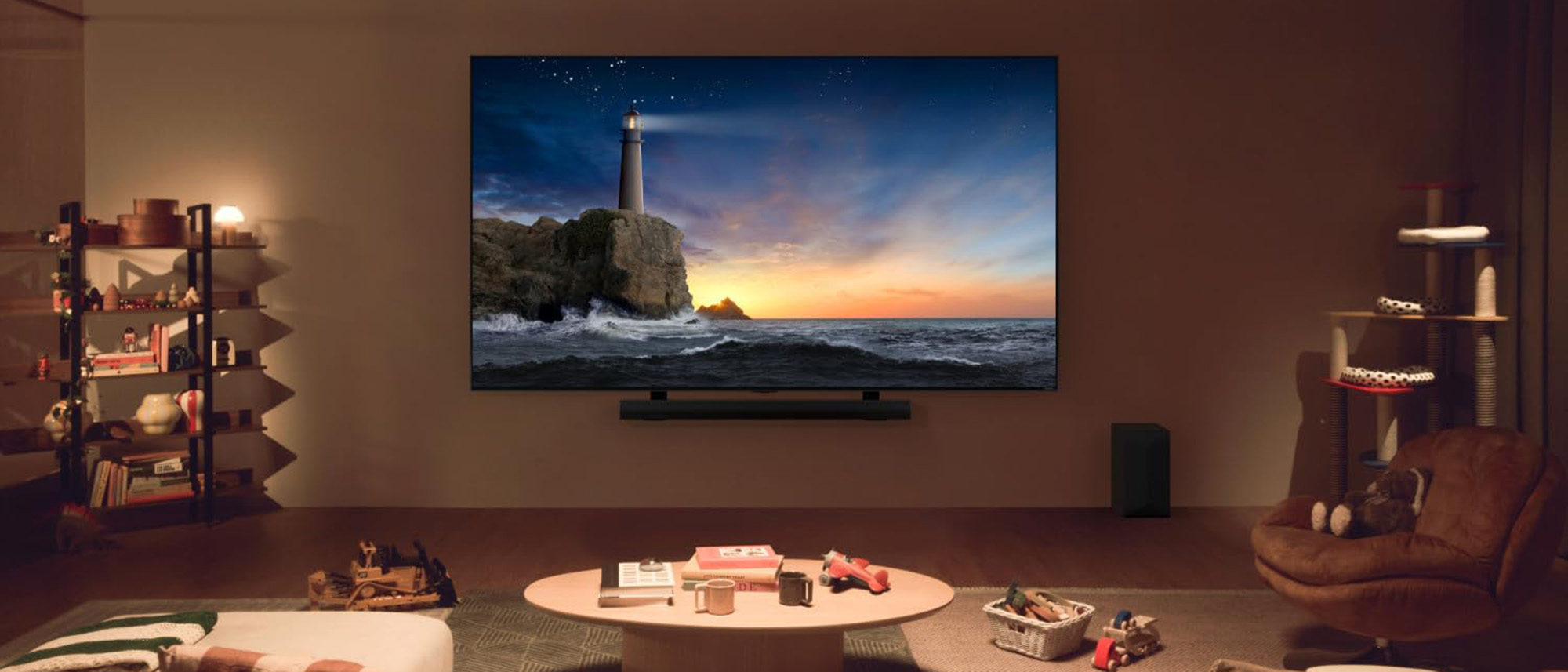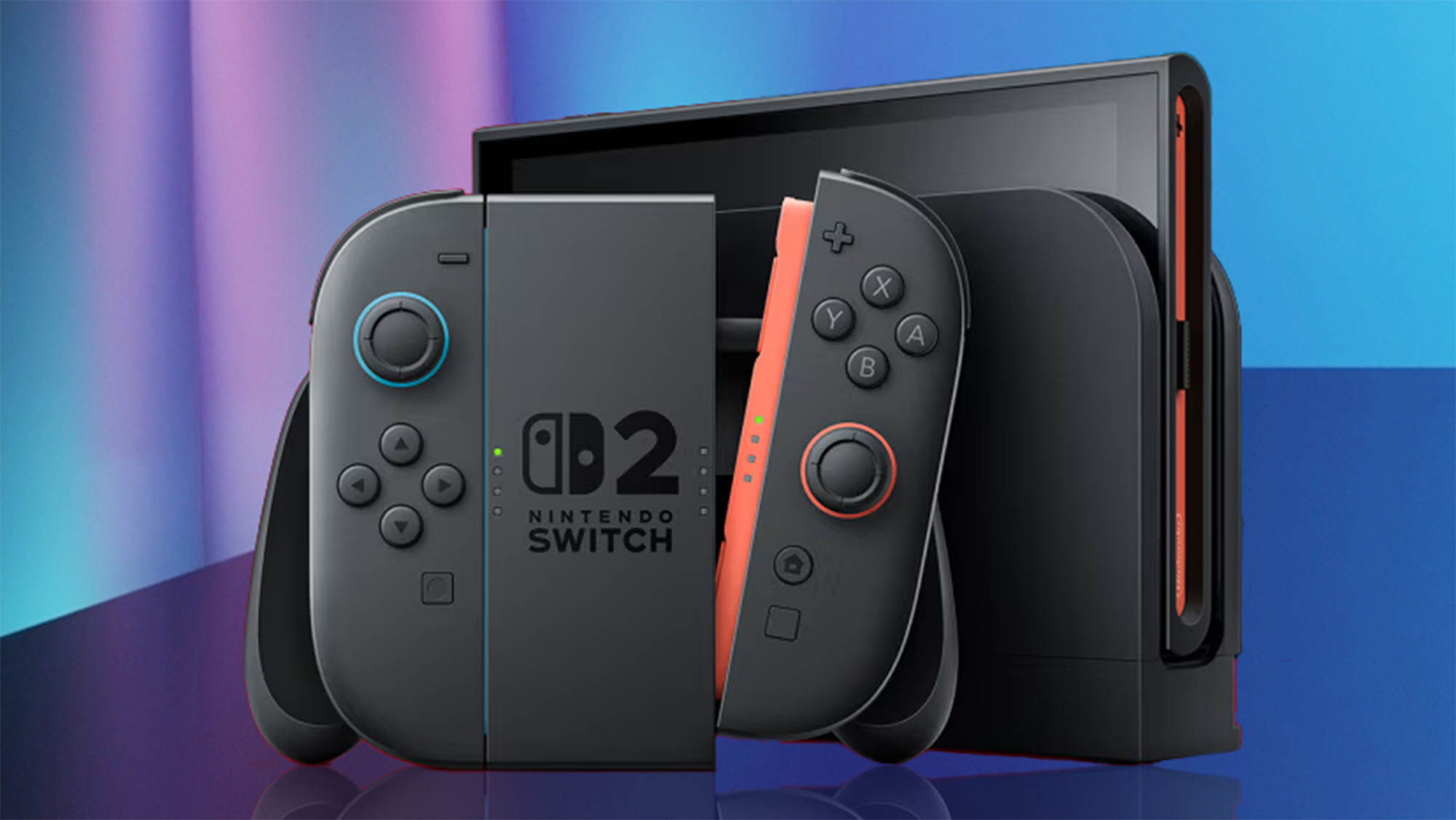Tom's Guide Verdict
Pros
- +
Useful gaming features
- +
Decent HDR performance
- +
Accurate color
Cons
- -
Light bleed and blooming
- -
Middling audio
- -
Susceptible to glare
- -
No Dolby Vision or HDR10+
Why you can trust Tom's Guide
The LG QNED80T is the most affordable entry in LG's 2024 QNED TV lineup. Although the QNED80T is competitively priced, I found its concessions are hard to overlook, even for people shopping on a budget.
Its picture isn't terrible and there's a decent selection of gaming features here. However, the QNED80T lacks key features found on similarly priced models, like HDR10+ and Dolby Vision support, as well as Mini-LED backlighting that can be found on rival sets from Hisense and TCL. Its built-in speakers sound tinny, too, especially during loud, action-based scenes.
Compared to the competition, the QNED80T lacks the features and performance necessary to compete for your hard-earned dollar.
LG QNED80T TV review: Price and release date
The LG QNED80T debuted in 2024 and sits at the bottom of LG's LED TV lineup, just below the QNED85T.
It starts at $549 for a 43-inch model, but right now, you can get the 55-inch QNED80T for about $50 less. Our review unit is a 65-inch version, though we don’t expect there to be any difference in performance should you decide to buy a larger or smaller screen size.
- LG 43QNED80TUC (43-inch): $549
- LG 55QNED80TUC (55-inch): $799 | Sale: $499
- LG 65QNED80TUC (65-inch): $999 | Sale: $599
- LG 75QNED80TUC (75-inch): $1,399 | Sale: $899
- LG 86QNED80TUC (86-inch): $2,299 | Sale: $1,199
Although it’s costlier than the Hisense U6N or TCL QM7 (both of which offer Mini-LED lighting and, in the case of the latter, 120Hz refresh rate) the QNED80T is competitively priced against the Samsung Q60D QLED. Right now, the 55-inch Q60D can be found for around $647 — about $150 more than the 55-inch QNED80T.
On the other hand, the 65-inch Hisense U6N Mini-LED TV is on sale for just $498 right now, which is about $100 less than the QNED80T at 65 inches.
LG QNED80T TV review: Design & remote
The QNED80T is equipped with V-shaped feet that screw into the back of the display. On 65-inch models and above, the feet can be attached in two separate positions, including a narrow configuration that makes it super easy to place on smaller surfaces.
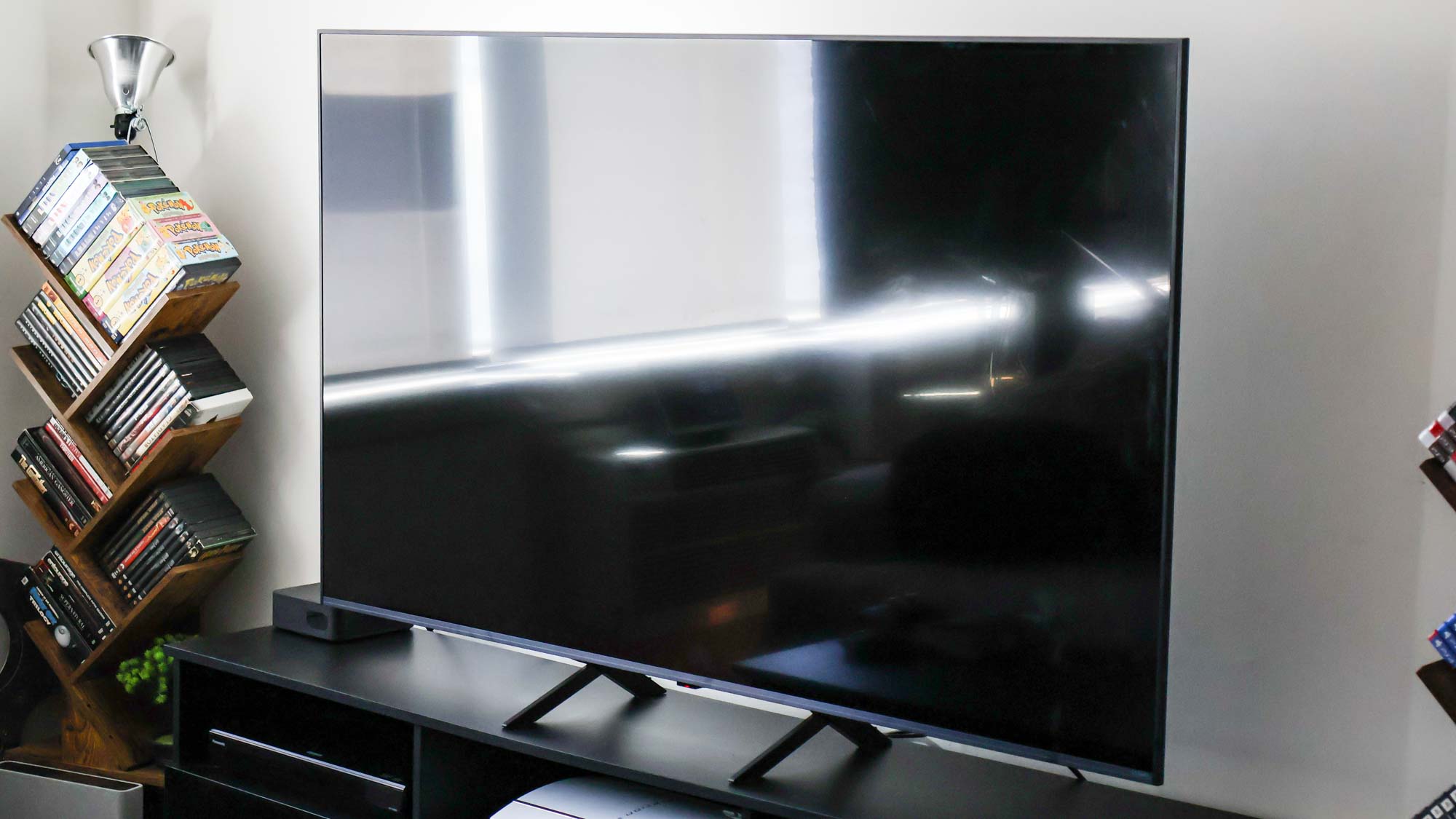
The feet are sturdy enough, but you could always wall-mount the QNED80T with 300x300 VESA mounting.
Given the TV's entry-level status, the panel is surprisingly slim at around 30mm in depth. However, the display's bezels are more pronounced than what you'll find in LG's higher-end TVs.
LG’s Magic Remote has remained a pain point due to its large, cumbersome size. Its motion-activated controls aren't that useful, either.
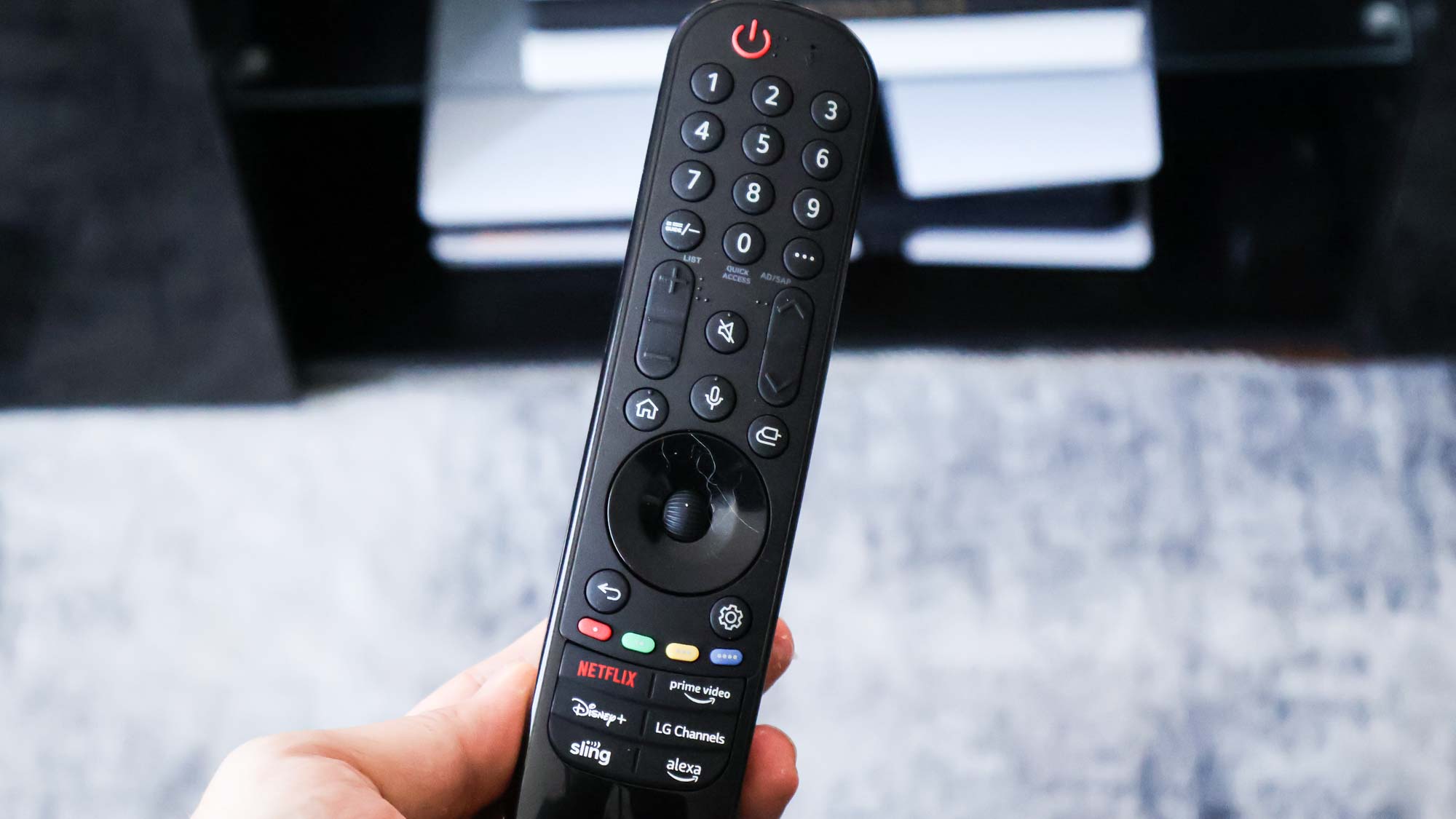
In theory, pointing and clicking at the screen should streamline the user experience, but it usually becomes a pain to use. Instead, I mostly stick to scrolling with the navigational buttons.
I do enjoy its scrolling wheel button for navigational purposes, but beyond that, the Magic Remote lags behind competitors like the Samsung Solar Cell remote.
LG QNED80T review: Ports
The QNED80T only offers three HDMI 2.0 inputs, and one of them serves as the TV's eARC-supported input. Unfortunately, that leaves just two for connected devices if you’re running a dedicated sound system.
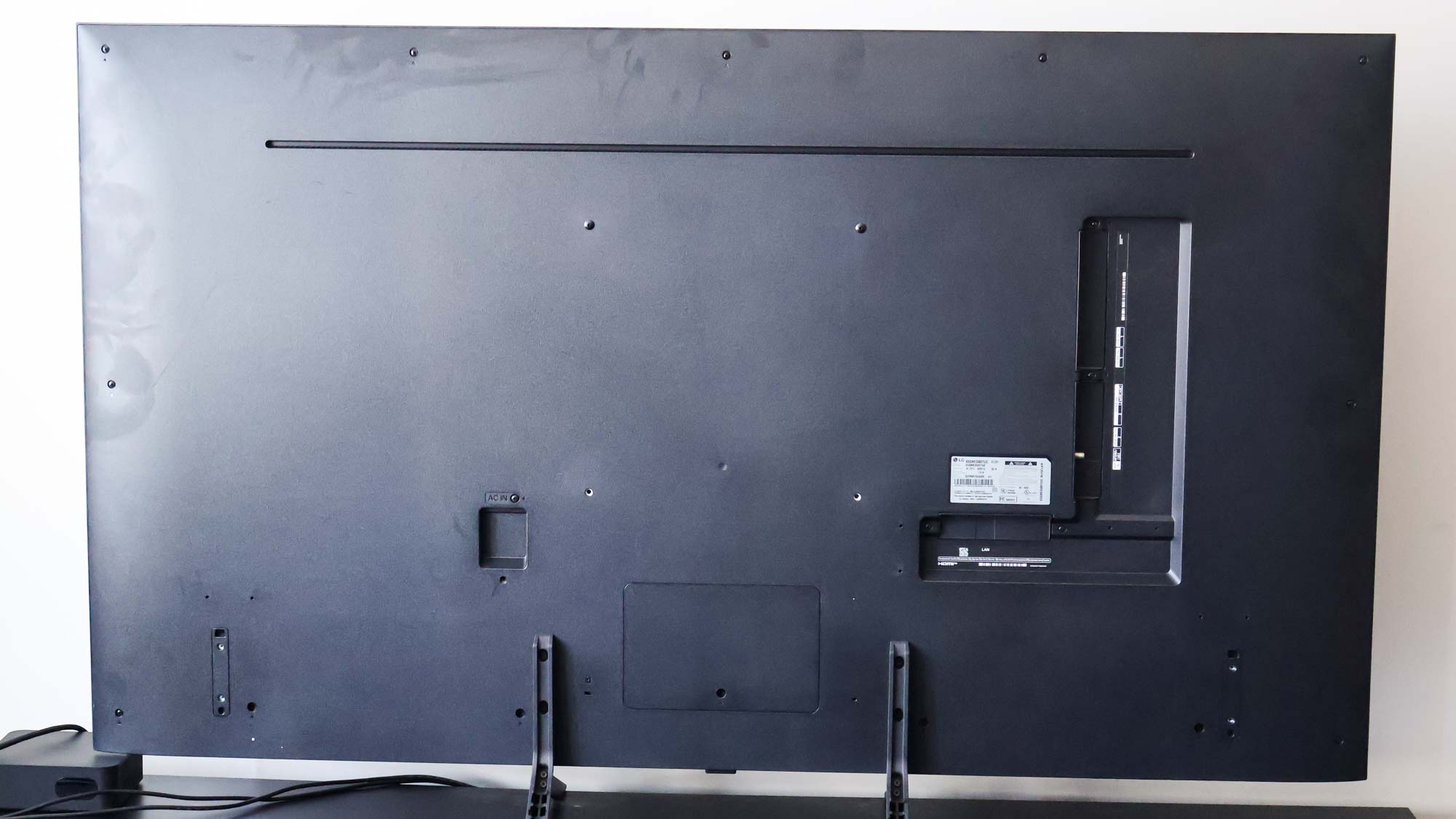
Beyond HDMI ports, it also features an RF input, an Ethernet port, two USB 2.0 ports and an optical audio output. Don’t expect an ATSC 3.0 tuner, though, as the QNED80T — like the rest of LG’s 2024 sets — is without one.
LG QNED80T review: Performance
The QNED80T is an edge-lit TV, which means its LEDs are positioned along the edges of the panel.
You can read more about the nature of this tech in our TV backlight explainer, but here's a key takeaway: Edge-lit LED TVs, while cost effective, usually offer worse contrast and backlight control than backlit LED TVs with local dimming. This is especially true when comparing them to Mini-LED TVs.
The QNED80T offers a rather rudimentary version of local dimming, but its limitations can be seen during HDR content. A great benchmark for this display was Amazon Prime’s “Too Old to Die Young,” as the show has plenty of darkly lit action scenes and vibrant close-ups.
It’s in the darker scenarios where the QNED80T falls flat. It’s more noticeable at night or when the lights are all turned off, but you’ll see a ton of light bleeding out the bezels of the screen. There's also minor haloing, best witnessed with on-screen subtitles or white text on a dark backdrop. These issues are a real drag during night scenes and dark movies like “Interstellar” and “Gravity.”
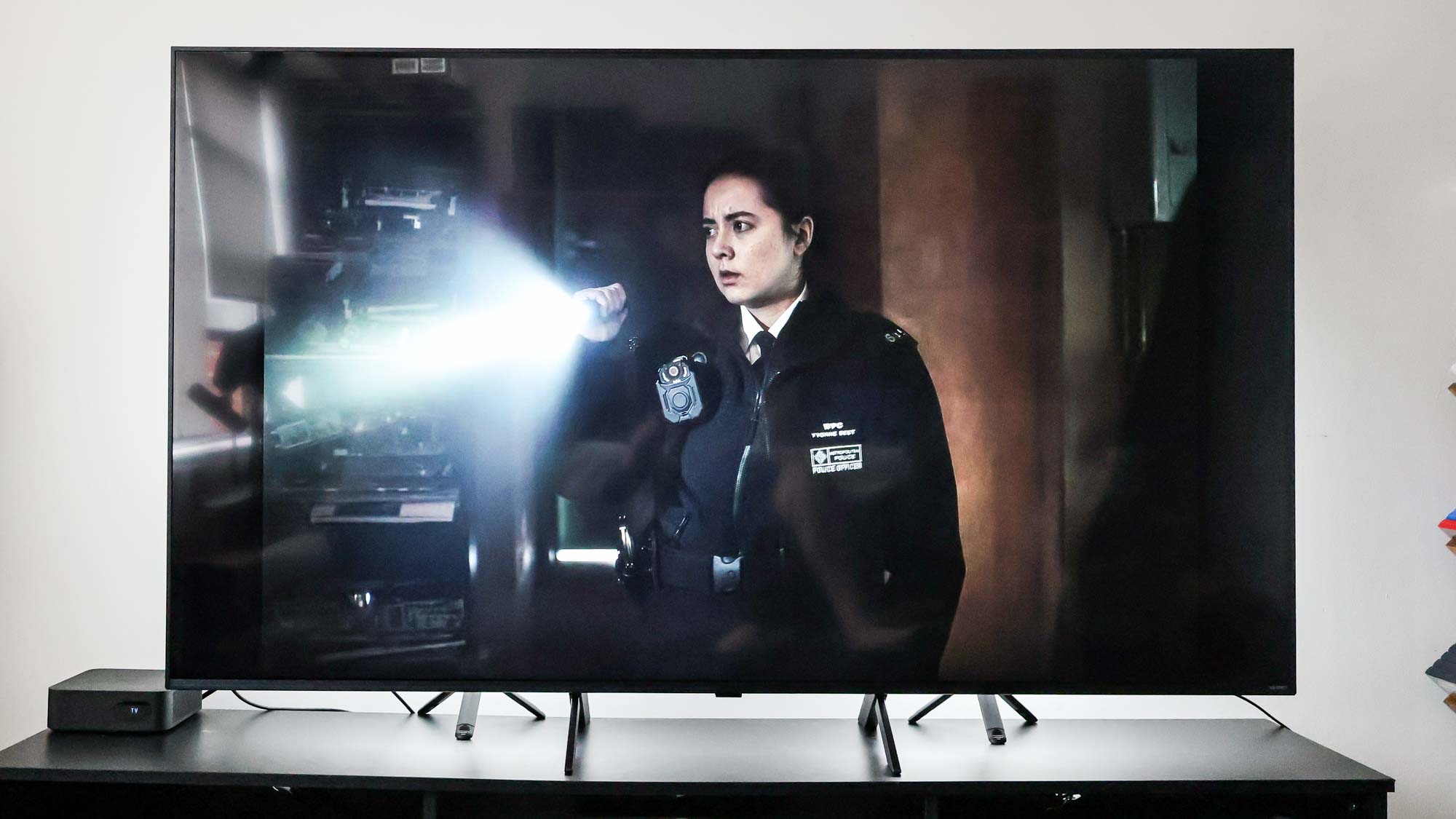
The QNED80T might be a poor fit for bright-room viewing for two reasons: a relatively dim picture and poor glare mitigation: We measured a peak brightness of 428 nits in standard content and 591 nits in HDR. This is relatively fine for a TV in this price range, but it's dimmer than both the Hisense U6N and the TCL QM6K.
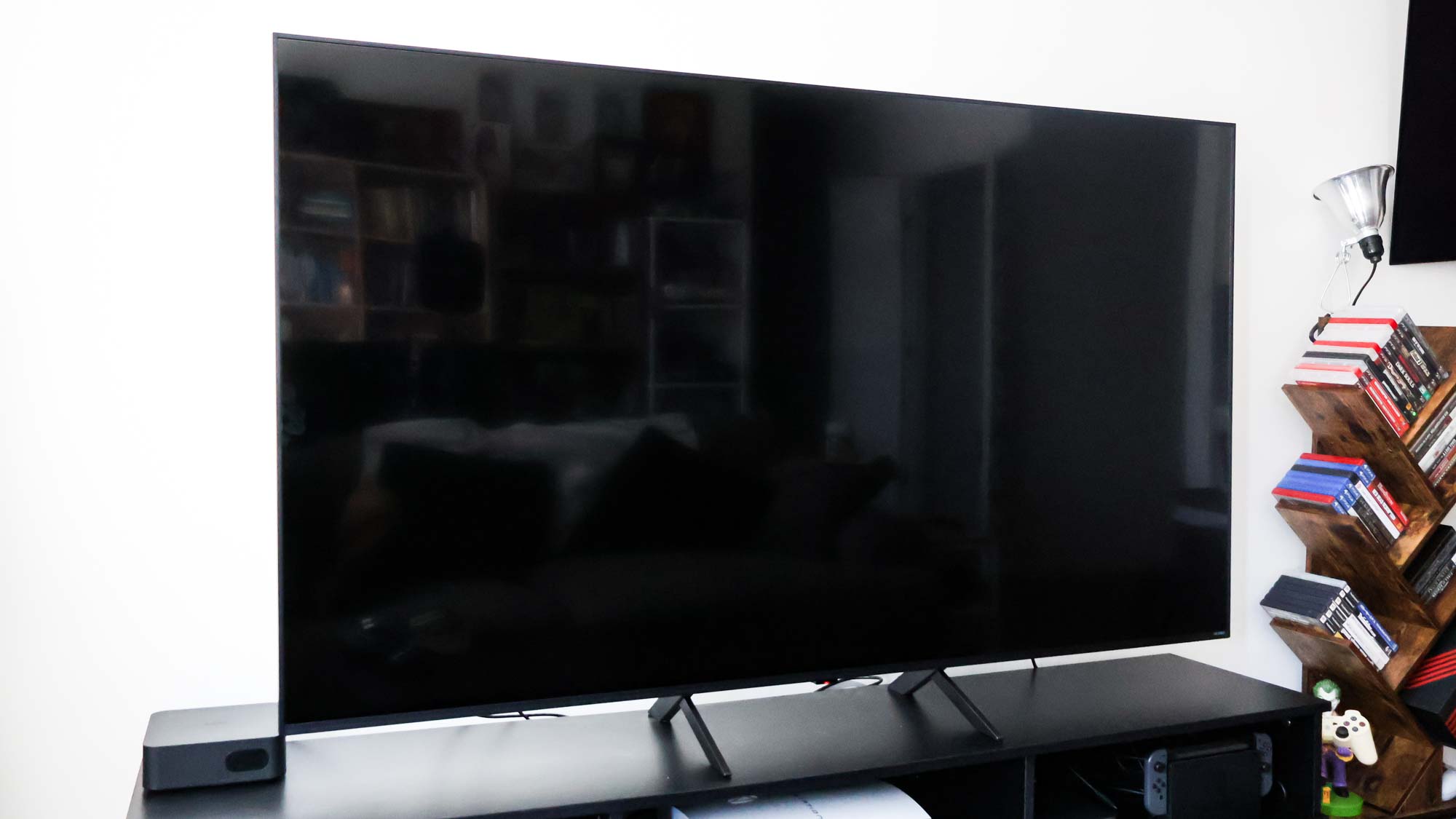
Crucially, this QNED’s competitors offer better display technology with superior backlight control. This has a significant positive impact on both bright and dark content.
Fortunately, when it comes to bright, colorful content, the QNED80T performed admirably, largely thanks to its terrific color handling. Measuring color accuracy, its Delta-E score of just 2.7 shows how well the QNED80T handles assorted HDR movies, anime and sports with accurate coloration. (A Delta-E of 3 is considered the perceptible threshold for color error.)
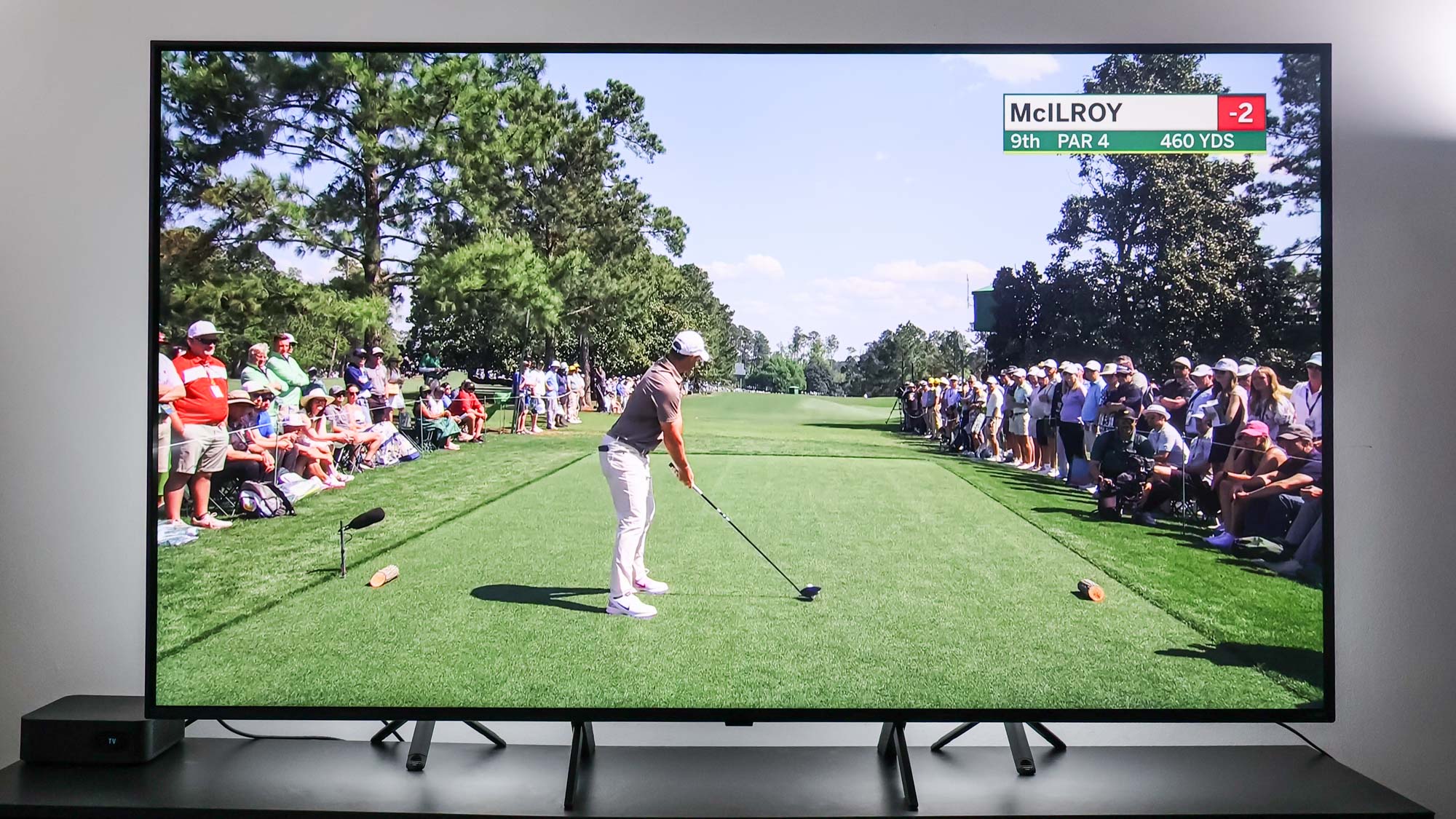
Skin tones stay true-to-form and outdoor shots — especially wide shots over the Masters Tournament open green — look lush and verdant. “Frieren: Beyond Journey's End,” which just landed on Netflix, popped on this screen with magical vibrancy.
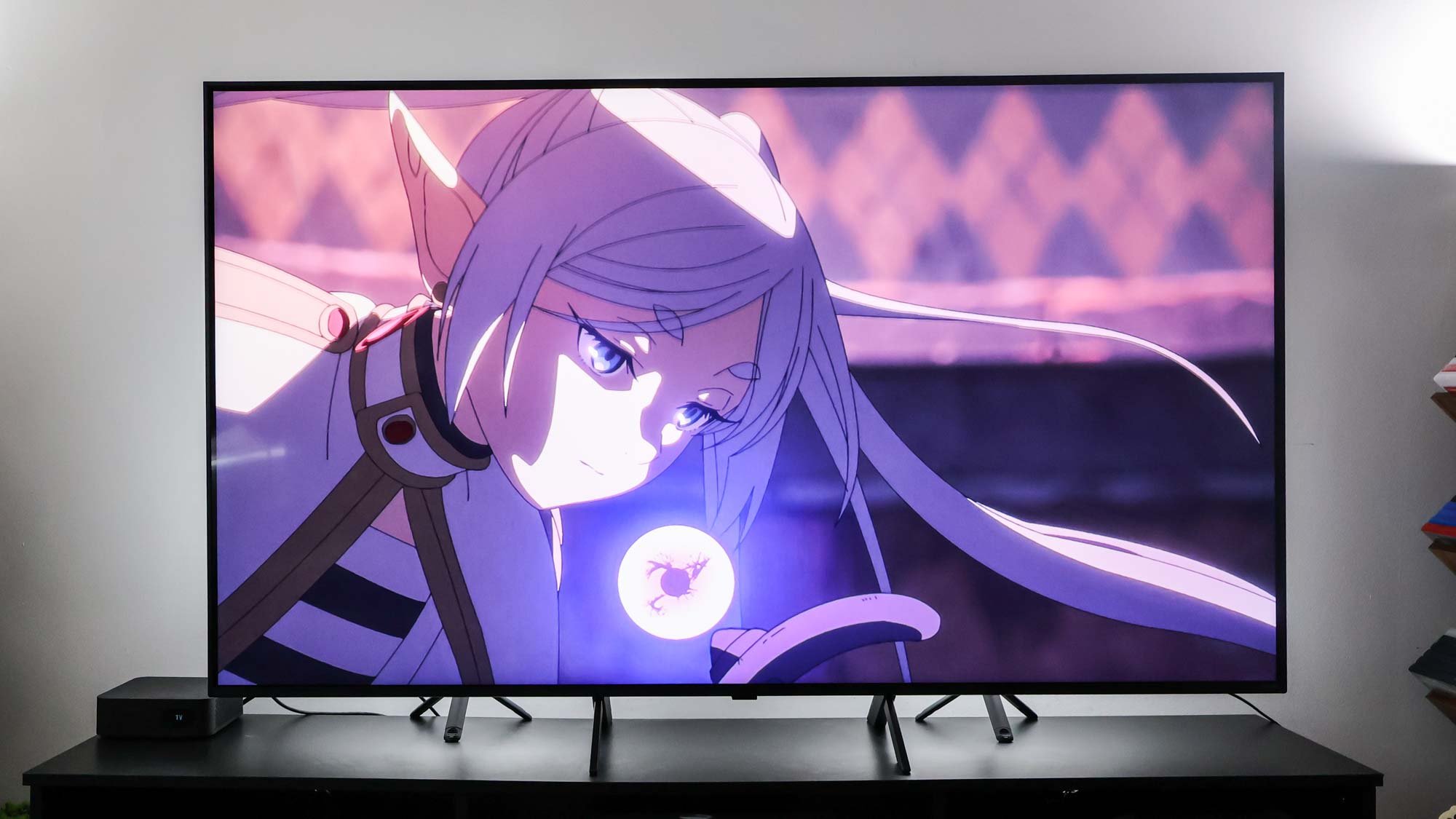
There’s no Dolby Vision or HDR10+ support on this TV. Without it, the QNED80T won't be taking full advantage of many Blu-rays, video games and streaming titles mastered for these formats. You're still getting HDR support, but it's not dynamically enhanced to match the creators' intent.
One important note about HDR on the QNED80T: The TV defaults to HDR Auto Power Save out of the box, and we recommend changing the mode to HDR Standard or Filmmaker depending on your preference.
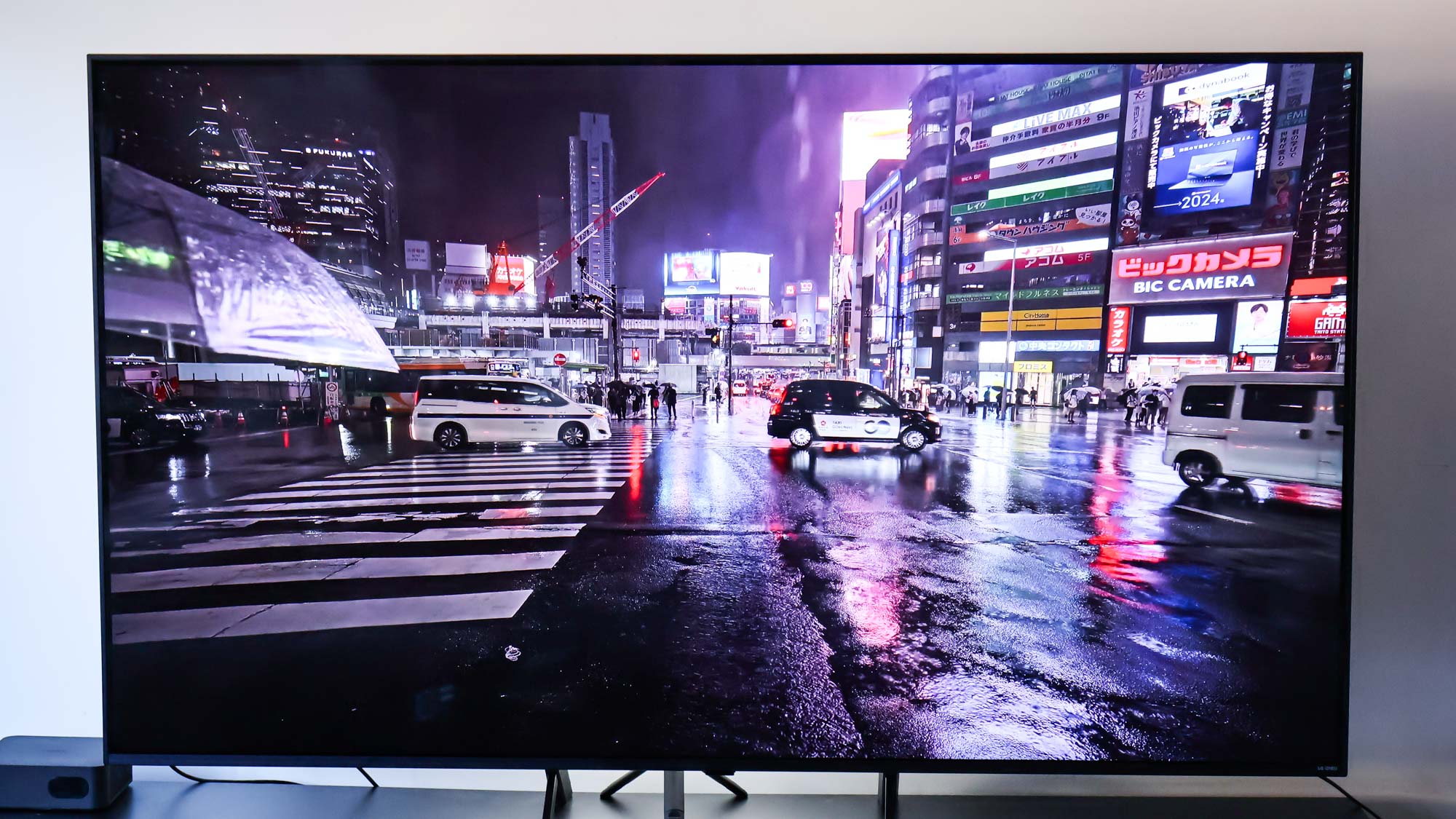
As far as gaming goes, the QNED80T handles most modern consoles adequately. It would be better suited for the Xbox Series X and PS5 if it had a 120Hz refresh rate and a lower input latency, but it has a few redeeming features. These include game streaming applications like Nvidia GeForce Now, plus gaming-specific settings you can change on-the-fly, so you never have to leave the game screen when adjusting picture performance.
How we test
We follow a standard testing protocol for every TV we review at Tom’s Guide. Our benchmarks include a series of technical and subject tests designed to rate the set’s performance. For our technical tests, we use a Jeti spectraval 1501-HiRes spectroradiometer, a Klein K10-A colorimeter, a Murideo 8K-SIX-G Metal pattern generator, and Portrait Displays’ Calman TV-calibration software to take measurements. We also use a Leo Bodnar 4K Input Lag Tester for determining the TV’s gaming prowess.
Subjective tests vary based on the reviewer, but usually feature anecdotes from a diverse selection of movies, TV shows, and other content reflecting the types of things you may actually want to watch on the TV.
LG QNED80T TV review: Test results
Let’s compare the LG QNED80T to similarly priced TVs — including TCL’s newest model — to see how they perform relative to one another.
| Row 0 - Cell 0 | LG QNED80T | Samsung Q60D | Hisense U6N | TCL QM6K |
SDR Brightness (10%, in nits) | 428 | 453 | 515 | 265 |
Delta-E (lower is better) | 2.7 | 2.5 | 2.5 | 2.3 |
Rec. 709 Gamut Coverage | 98.23% | 99.12% | 99.13% | 99.67% |
HDR Brightness (10%, in nits) | 591 | 468 | 615 | 695 |
UHDA-P3 Gamut Coverage | 92.32% | 90.88% | 92.96% | 94.71% |
Rec. 2020 Gamut Coverage | 67.13% | 69.53% | 75.1% | 71.23% |
Input latency (in milliseconds) | 15.2 | 9.5 | 9.3 | 13.1 |
On paper, the QNED80T performs similarly to these TVs, but there are some key takeaways here. The Hisense U6N and TCL QM6K are brighter in HDR, and because these TVs have better backlight control, their HDR performance will be better overall than the QNED80T.
Additionally, those rival TVs are not only just as accurate as the QNED80T in Filmmaker mode, they deliver better overall color volume, too.
Capping us off is input latency. The QNED80T does quite poorly here compared to its competitors. It won't be among the best gaming TVs this year.
LG QNED80T TV review: Audio
The QNED80T’s middling audio leaves a lot to be desired. This is where one of the best soundbars will come in handy.
Audio is tinny during action scenes with lots of explosions or loud sound effects, particularly car engine sounds. To a certain extent, this is to be expected with a cheaper model like this, where a more powerful speaker system would raise the cost a bit.
Still, the lackluster audio often ruined the immersion, and the QNED80T’s lack of Dolby Atmos support is a big let down, too.
The QNED80T offers an AI Sound Pro feature that pushes out a virtual 9.1.2 up-mix, and while it helps in some cases, it isn’t a foolproof approach to cleaning up the audio. In addition, there’s a Clear Voice Pro feature that enhances dialogue in some cases, but I’ve steered clear from this altogether, as it comes with some funky automatic volume leveling that I didn’t enjoy.
LG QNED80T TV review: Interface and apps
Like every LG smart TV, the QNED80T runs on webOS, specifically webOS 24.
Out of the box, one of the worst aspects of webOS is that you’re immediately bombarded with advertisements the moment you turn the TV on. Plus, the smart platform is slow and cumbersome on the QNED80T, largely due to its less-powerful processor.
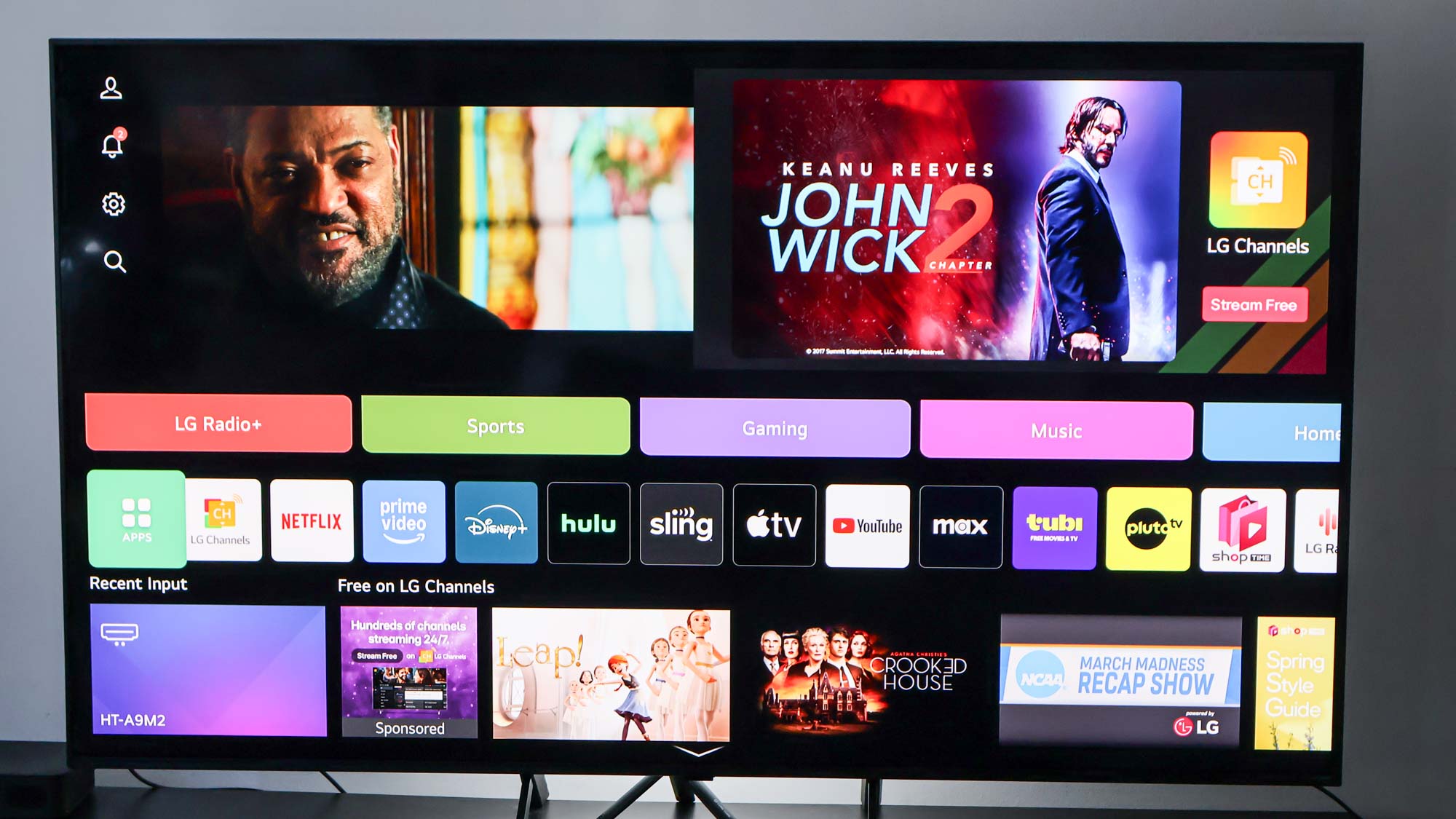
A bright spot for webOS is a slew of free channels to enjoy (though this is true of Roku and Google TV, too). There’s a diverse range of local news, sports and more.
LG’s Gaming Portal offers access to several notable gaming platforms, but unfortunately, it misses out on one of the best cloud gaming services in Xbox Game Pass — at least for now. It will reportedly release on newer LG sets sometime this year, but LG has yet to announce a release date.
LG is also running a webOS ReNew program, which means the QNED80T and other new LG TVs will receive at least five years of major updates to webOS.
LG QNED80T TV review: Verdict
The QNED80T is a tough sell. It’s missing key features like enhanced HDR formats and full-array local dimming, while TVs like the Hisense U6N and TCL QM6K are not.
And, although I loved its color handling, it’s hard to look past the QNED80T’s backlight bleed and haloing. It just pulled me right out of the experience during darker scenes.
If you’re looking for a wider range of features and don’t mind spending more, get the TCL QM6K. It’s brand new, supports Dolby Vision and Dolby Atmos, and features a 144Hz refresh rate. Right now, a 55-inch QM6K is about $599.
Alternatively, if you want even better performance, I’d recommend the Hisense U7N. It features Mini-LED backlighting, gets over twice as bright as the QNED80T and offers a similar set of features. The 55-inch U7N is also $499 right now — the same price as the 55-inch QNED80T.
The LG QNED80T is competitively priced, but the value is low because it offers very little compared to its rivals.

Ryan Epps is a Staff Writer under the TV/AV section at Tom's Guide focusing on TVs and projectors. When not researching PHOLEDs and writing about the next major innovation in the projector space, he's consuming random anime from the 90's, playing Dark Souls 3 again, or reading yet another Haruki Murakami novel.
You must confirm your public display name before commenting
Please logout and then login again, you will then be prompted to enter your display name.
